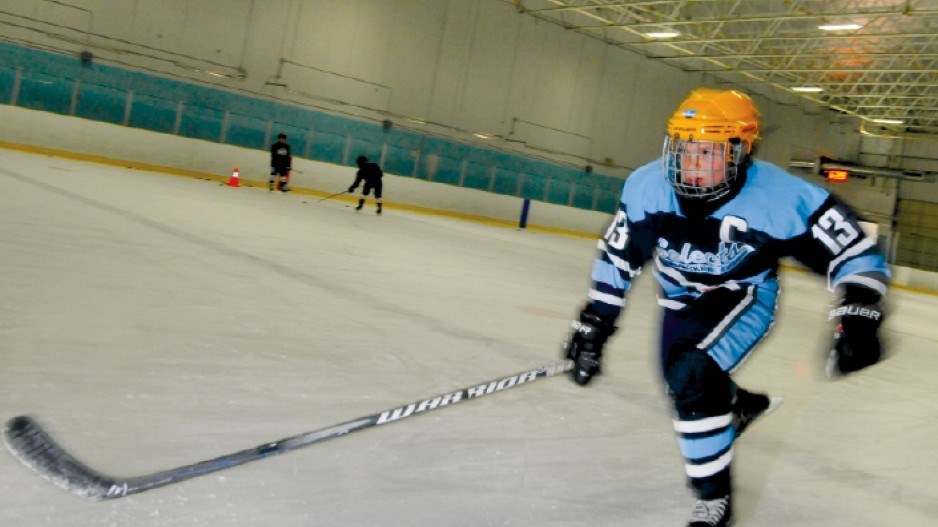Booking rinks and filling programs during the summer months to maintain revenue had always been an issue for local hockey companies until they stumbled upon the solution: extend the season.
“If there was no spring hockey and extra training year round, there is no way [my son] Niko would have developed as quickly as he has,” said Sinisa Jovanovic, who, like many other dedicated hockey dads, is willing to sacrifice time and money to give his nine-year-old son an advantage in the competitive world of minor hockey.
Spring hockey is a relatively new phenomenon. Much of its growth has occurred during the last 15 years. There are now approximately 300 spring teams playing in the Lower Mainland with children between the ages of six and 16 rounding out the majority of team rosters.
Hockey is quickly becoming a year-round business, and companies such as Canlan Ice Sports(TSX:ICE) are capitalizing on the growing market.
Canlan first launched its Classic Tournaments Division in Greater Toronto to increase in-house business during the perennially slow spring and summer months, and over the last 10 years it has grown into a success from coast to coast.
From a small four-team league in the mid-1990s to the profit-generating programs today with more than 5,000 players registered in the Lower Mainland alone, spring hockey is limited only by the number of programs and tournaments being offered.
“We plan to operate as many events as the demand requires and that we have facilities for,” said Kurtis Matthews, director of Canlan classic tournaments.
According to Canlan’s annual report, 2010 was a record year for its tournaments division as 1,979 teams competed in 51 tournaments throughout Canada and the U.S. generating $1.8 million in revenue for the company.
As owners and operators of facilities across the country, such as its flagship Burnaby 8 Rinks arena, Canlan must keep its ice sheets filled year-round to maintain profitability.
In 2010, 67% of Canlan’s ice-time sales were generated through in-house programs. Spring tournaments were a major part of those sales. Without the rapid expansion of spring programs, there would be little demand locally for ice rentals in the seasonally slow period between April and July.
“Without spring hockey, the rinks would sit empty at this time of year,” said Al Wozney, national director for Selects Hockey.
Selects Sports Management, the parent company for Selects Hockey, is one of the spring training and tournament programs that recently expanded into B.C.’s hockey-crazy market.
With its corporate headquarters in Portland, Maine, Selects started out in 2003 as a tour company that gave teams and players an opportunity to travel to Europe and play in elite level tournaments.
As national director, Wozney is responsible for building the company and expanding its program across Canada.
What began with a single Canadian training centre in Edmonton has expanded to include programs in Ottawa, Vancouver, Winnipeg, Calgary and five more in Greater Toronto.
Selects Hockey has also capitalized on the growing tournament market by purchasing many of the top events in North America and Europe, including the World Selects Invite Tournament, which annually attracts many of the world’s top skill level teams.
“In order to run a competitive spring program from April to June, just to break even you have to charge each kid about $1,000,” said Wozney. “Beyond that, the higher costs come into paying for tournaments, additional professional coaching instruction and, of course, equipment.”
Many of the spring programs require players to buy additional equipment on top of what they already use on their winter teams.
That extra equipment can include game and practice jerseys, hockey socks, helmets, bags and even warm-up track suits.
Jovanovic estimates that, over the past year, he has spent over $13,000 bankrolling Niko’s hockey pursuits.
During the winter season, the most expensive non-private minor hockey association’s registration costs about $900; spring teams can cost as much as $4,000 to join. Much of that difference is because non-profit minor hockey associations receive subsidized ice rental rates from municipal rinks.•




